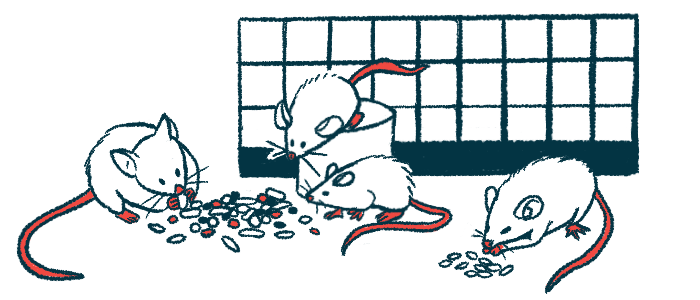Moderate, long-term alcohol use leads to PAH-like changes in rats
Enlarged right side of heart, pulmonary artery remodeling seen at 8 weeks

Chronic alcohol consumption damages the heart and blood vessels in ways that seem to set the stage for pulmonary arterial hypertension (PAH), according to a study in male rats.
These findings “yield new insight into the adverse effect of ethanol on cardiopulmonary [heart and lung] health, providing a foundation for future studies,” the researchers wrote in the study, “Ethanol-induced lung and cardiac right ventricular inflammation and remodeling underlie progression to pulmonary arterial hypertension.” It was published in Alcohol Clinical and Experimental Research.
The heart is responsible for pumping out blood, delivering oxygen and nutrients to the body. Very simply, the right side of the heart pumps blood to the lungs to pick up oxygen, and then the left side of the heart pumps oxygen-rich blood out to the rest of the body.
PAH is marked by increased pressure in the blood vessels that carry blood from the right side of the heart through the lungs, known as the pulmonary arteries.
Study into how alcohol drinking affects right side of heart, pulmonary arteries
It’s well-established that drinking alcohol can have negative health repercussions, including detrimental effects on heart health. However, most research examining the cardiovascular effects of alcohol specifically have focused on how it affects the left side of the heart.
Much less is known about how alcohol affects the right side of the heart and the pulmonary arteries.
A pair of scientists at East Carolina University in North Carolina conducted a series of experiments aiming to better understand how alcohol affects these parts of the circulatory system.
For their experiments, the researchers used a rat model where some rats were fed a liquid diet including 5% ethanol (alcohol) for eight weeks. Other rats, serving as controls, were given a liquid diet containing an equivalent number of calories, but no alcohol. Only male rats were used for these experiments.
“This study contributes new knowledge on the adverse cardiopulmonary effects of moderate 5% [weight by volume] chronic (8 week) ethanol consumption in male rats,” the scientists wrote.
They found that rats given alcohol had right ventricle hypertrophy, meaning the right side of the heart was enlarged. The alcohol-consuming rats also had higher blood pressure and evidence of remodeling in their pulmonary arteries — all of which are hallmark PAH symptoms and signs.
Inflammatory signaling molecules at higher levels in pulmonary arteries
“Collectively, the present findings are the first to demonstrate ethanol-induced adverse cardiopulmonary structural and functional effects along with possible mechanisms for the progression toward a pulmonary arterial hypertension phenotype in male rats,” the researchers wrote.
Further analyses showed that, in the pulmonary arteries of rats given alcohol, there were increased levels of pro-inflammatory signaling molecules such as interleukin-6 and tumor necrosis factor alpha. At the same time, levels of an anti-inflammatory molecule called bone morphogenetic protein receptor two were reduced in these rats.
This more pro-inflammatory environment likely contributed to the development of PAH-like changes, the scientists said, noting a need for further research.
They also highlighted a need to conduct similar tests in female rats, as sex-specific hormones like estrogen may affect cardiovascular health and the impact of alcohol in ways that need to be better understood.








